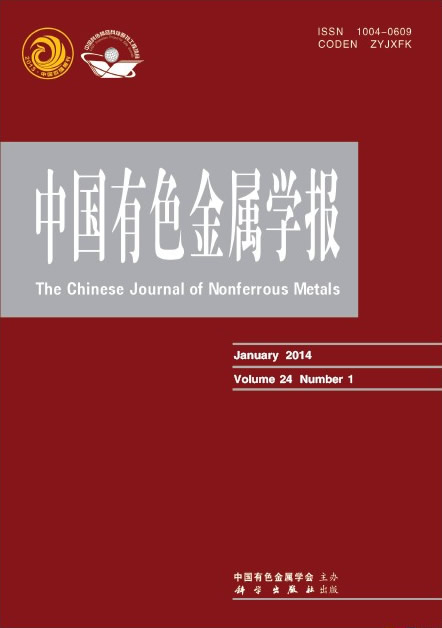(1. 南昌航空大学 材料科学与工程学院,南昌 330063; 2. 南京航空航天大学 材料科学与技术学院,南京 210016)
摘 要: 采用机械活金化+热压烧结法制备5种不同相组成的Cr-Nb合金,研究相组成对Cr-Nb合金在950~1 200 ℃空气中氧化行为的影响。结果表明,Cr相能显著增加NbCr2合金950 ℃的抗氧化性能;而Nb相不利于合金高温抗氧化性的提高,甚至发生灾难性氧化。SEM和XRD分析显示,单相Cr-2.5Nb合金发生了Cr的外氧化,只形成单一的Cr2O3膜;而双相Cr-18.5Nb合金和单相Laves相NbCr2合金均发生Cr的外氧化和内氧化,形成两层结构的氧化膜。但随着氧化温度增加到1200℃,由于Cr2O3的挥发,导致Cr-Nb合金高温抗氧化性变差。因此,为满足实际高温应用要求,对富软第二相Cr或Nb的NbCr2基合金实施相应的表面防护是必须的。
关键字: Cr-Nb合金;Laves相;软第二相;相组成;氧化行为
(1. School of Materials Science and Engineering, Nanchang Hangkong University, Nanchang 330063, China; 2. College of Materials Science and Technology, Nanjing University of Aeronautics and Astronautics, Nanjing 210016, China)
Abstract:Five types of Cr-Nb alloys with different phase constitutions were fabricated by mechanical alloying and hot pressing. The influence of phase constitution on the oxidation behavior of the hot pressed Cr-Nb alloys were investigated at 950−1 200 ℃ in air. The results show that Cr phase improves the oxidation resistance of Laves phase NbCr2 based compounds at 950 ℃. However, Nb phase deteriorated the oxidation resistance, moreover, Nb phase results in a catastrophic failure during oxidation. SEM and XRD analyses indicate that the CrSS phase (Cr-2.5Nb) exhibits selective Cr oxidation and forms a continuous chromia scale. However, single phase alloys of Cr-33Nb and two phase alloys of Cr-18.5Nb exhibit that internal and external oxidation happen simultaneously for the active element chromium, and their oxide scales are made with a multi-layered scale consisting of an outer layer being a porous, loosely adherent Cr2O3 layer and the inner layer being of CrNbO4. With the exposure temperature increasing up to 1 200 ℃, the oxidation resistance of Cr-rich Cr-Nb alloys decreases due to the continuous vaporization of CrO3 in the oxide scale. Therefore, it is necessary to apply surface protective coatings on Cr(or Nb)-NbCr2 alloys to promote their application in the high temperature environment.
Key words: Cr-Nb alloys; Laves phase; ductile phase; phase composition; oxidation behavior


